If you've been helmet shopping in the last few years, the likelihood is you will have seen a MIPS-equipped helmet, recognisable from the yellow liner and small yellow dot on the outside of the helmet.
But what is MIPS and why do so many helmets now have this technology?
We spoke to MIPS and were guided around its HQ in Stockholm, Sweden (via video) to understand what MIPS is, how it works, the history of the technology, and whether it is worth getting a helmet with MIPS.
What is MIPS?
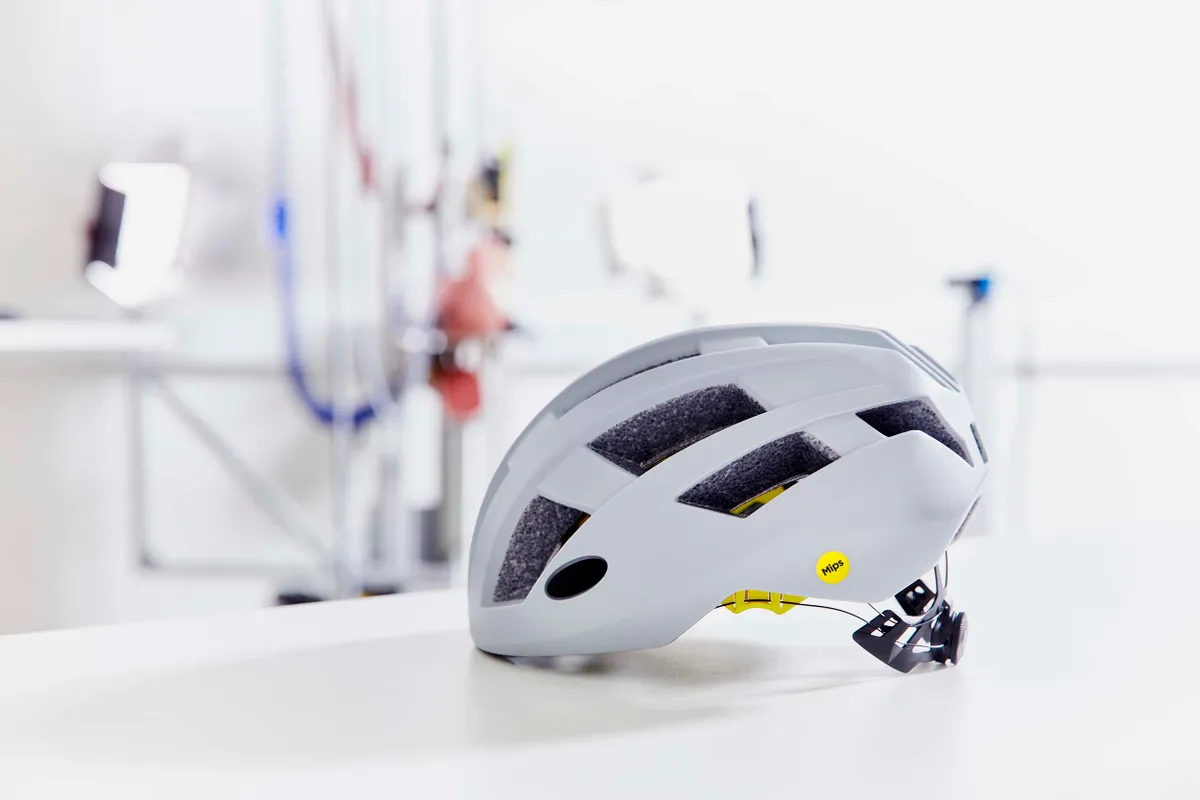
MIPS stands for Multi-directional Impact Protection and is an 'ingredient' safety technology that over 120 brands incorporate into their helmets. In 2020, there were around 729 helmets with MIPS on the market and 7.3 million units sold.
MIPS is used in many cycling helmets, but it is also used in equestrian helmets, construction helmets and motorbike helmets.
The MIPS system itself is a low friction layer that sits between the EPS foam and the helmet liner, and allows for a sliding motion of 10 to 15mm in all directions. This aims to reduce the transfer of rotational motion onto your brain.
While linear, or straight-on, impacts can lead to skull fractures and bleeding, MIPS says studies show rotational impacts can lead to concussion and serious traumatic brain injuries.
How does MIPS work?
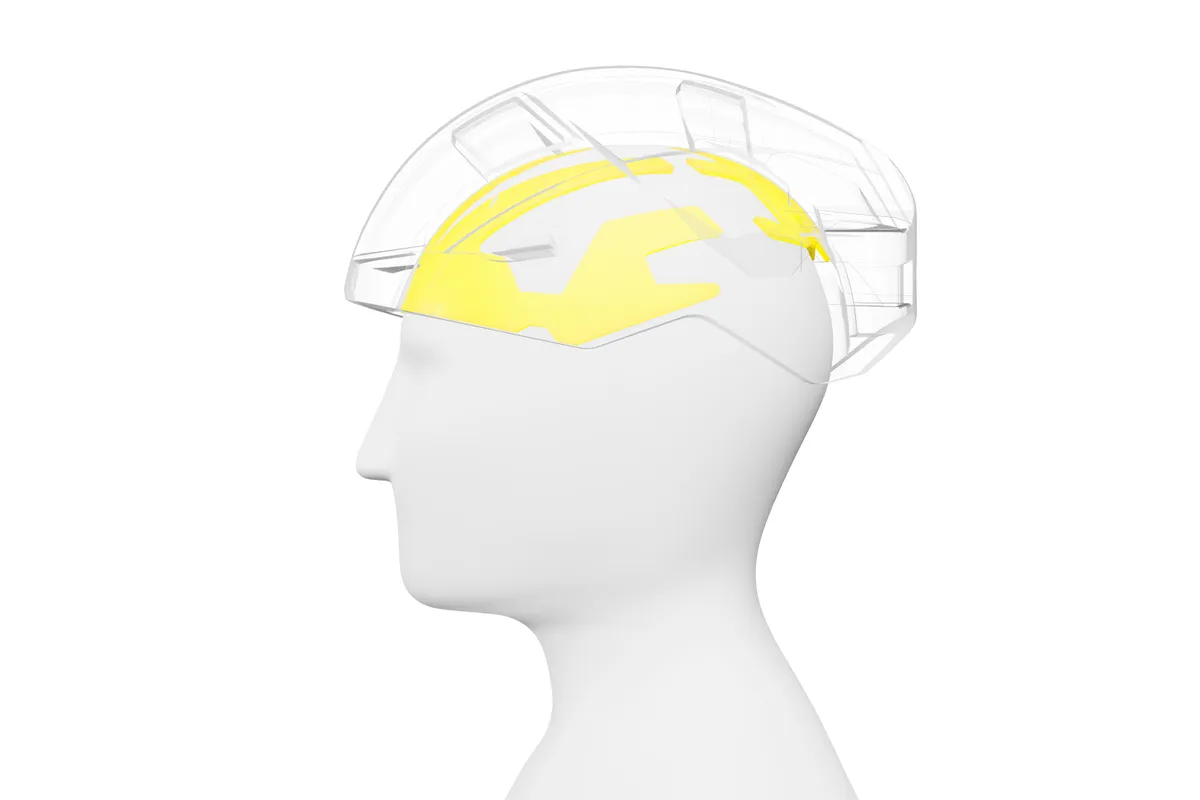
In short, MIPS works by using a moving layer to prevent rotational impacts from passing onto your brain. But, as you might have guessed, it’s all a bit more complicated than that.

At its core, MIPS technology mimics your head’s own protective structure. Between your skull and your brain is a layer of cerebrospinal fluid, which allows your brain to slide inside your head, protecting it from rotational forces caused by oblique impacts.
MIPS says that while most helmets are designed to deal with linear forces, its systems account for these rotational forces.
It makes sense when you think about any time you’ve crashed a bike, or even just fallen over. The likelihood of you dropping vertically onto the ground being exposed only to a linear force is incredibly slim – there is almost always an angle involved.
Peter Halldin, chief technical officer at MIPS, explains what happens when you fall at an angle and how the MIPS system counteracts the rotational forces caused because of this:
“When you fall to the ground, we have the horizontal speed forward and the impact to the ground, and during that impact, there is a tangential force that will lead to rotation of the helmet and the head.
“What we actually do with the MIPS system is mimic a fall on ice. So instead of [the head] grabbing into the ground and experiencing rotation, it’s more like we slide on ice and continue in the direction we were supposed to go.”
By introducing the sliding layer into the helmet, the head and brain are given a better chance of continuing in a linear direction during the impact, as opposed to being exposed to dangerous rotational forces.
It’s also worth noting the time frame in which a helmet can actually do something to help prevent serious brain injury is slim.
“It is a very quick impact,” explains Halldin. “The duration of the impact is about 5 to 10 milliseconds. During this very short time, the force and the acceleration on the head is very high. It’s like having more than ten people standing on your head.”
Halldin says MIPS allows your head to keep moving even with this amount of pressure applied and stresses how a helmet without a low friction layer wouldn’t be as able to move around on your head.
Why is protecting against rotational force so important?
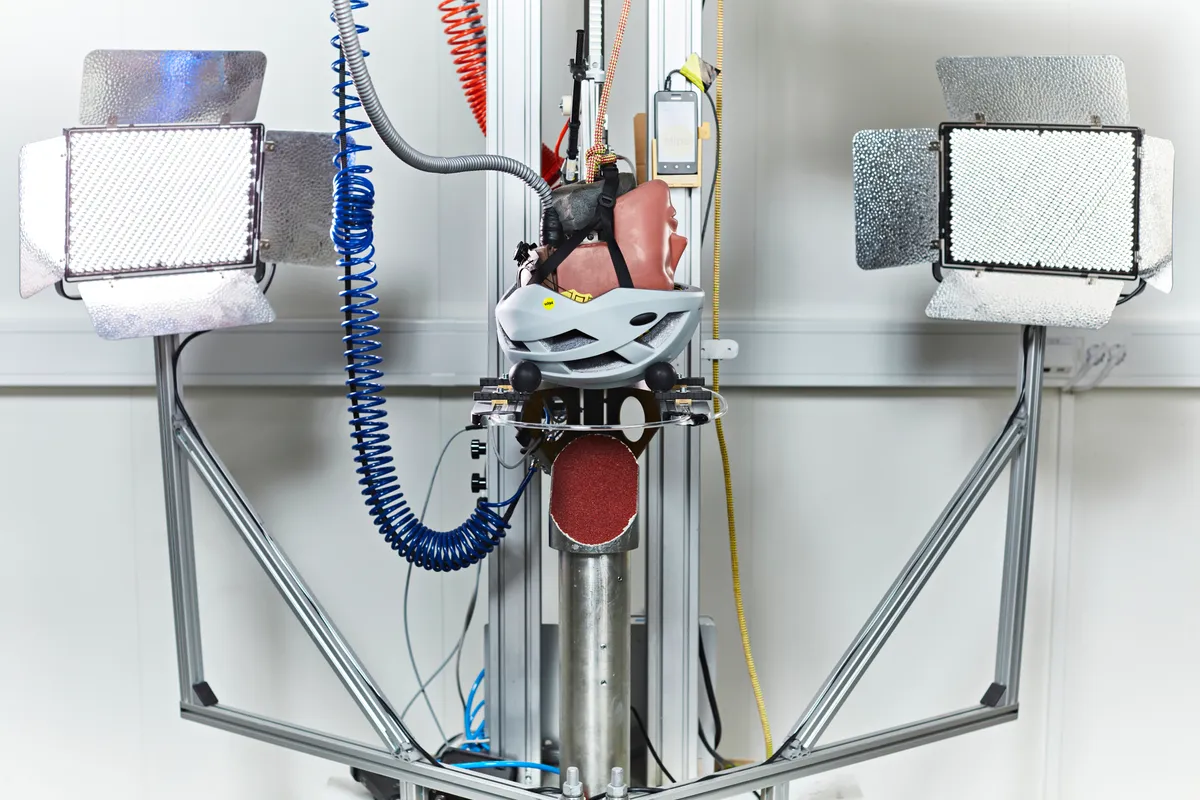
There are two analogies used by the team at MIPS to help explain what’s at stake, and why preventing rotational forces from transferring to the brain is important.
“The human brain is very similar to water when it comes to shear properties,” says Halldin.
Like water, the brain cannot be compressed. If you expose a bowl of water or a human head to a linear force, Halldin says you will see very low deformation figures for the central part of the bowl of water and the brain. However, if you introduce a rotational force you will see higher strain values on the centre.
Marcus Seyffarth, head of product development at MIPS, uses the analogy of stretching a rubber band to explain the effect these strain values can have.
The more you stretch an elastic band the less likely it is to return to its original shape, and the same can be said for rotational forces in the brain.
“If you get a little bit of rotational motion in the brain, nothing will happen. If you get a little bit more, you might be a little bit concussed, but you’ll be ok. But if you get a little more than that you might get a severe traumatic brain injury.”
This severe traumatic brain injury can manifest in different ways. The axons, or the nerve fibres, in your brain can shear causing diffuse axonal injury (DAI), or the veins can tear leading to a subdural haematoma, where blood collects between your brain and skull. This can lead to various symptoms from feeling sick to paralysis on one side of the body.
Who created MIPS?
MIPS' origins extend back to 1995 when Halldin, a PhD student at the time, was researching the biomechanics of head and neck injuries.
“I understood that the brain could slide inside of the skull in the cerebrospinal fluid. So I asked my supervisor Hans von Holst, the brain surgeon, if this safety system could be applied in a helmet and he said ‘that’s a great idea’. So we started to work on this idea and found that it probably had a good potential to increase safety in helmets.”
The pair started to research the types of impacts experienced by bicycle and motorcycle helmets as well as the current test standards.
Through this, they realised the standards tested only for linear impacts rather than rotational forces, and came up with the idea for MIPS in 1996. The first scientific publication regarding MIPS was published at the beginning of the 2000s.
Halldin and von Holst then founded MIPS AB in 2001, and in 2007 launched the first MIPS helmet, which was actually an equestrian helmet.
The company released the first third-party helmet with MIPS a few years later. They realised there was greater potential to get MIPS into helmets if they worked with other helmet manufacturers, as opposed to producing their own. This is a business model much like Gore-Tex or Polartec, which sell their fabrics to different clothing companies.
“We were a small company,” says Halldin. “It takes quite a lot of effort to get your product in different helmet segments.
“At that time in 2010, we felt we had a better possibility to save more lives if we became an 'ingredient' brand. As a result, we’ve been able to integrate into many, many more helmets than we would’ve done if we were just a helmet brand ourselves.”
Now, MIPS works with helmet manufacturers to include MIPS technology in their helmets from the very beginning of the design process, and the company also works with brands to advise on other aspects of helmet design.
Does MIPS affect helmet size?
When MIPS first started introducing its technology into helmets, it was retrofitting the technology into helmets that were already available on the market.
This meant that there was an impact on the size of the helmet because MIPS was adding a 0.5 to 0.8mm layer, which reduced available headspace.
However, this isn’t something that typically happens anymore because MIPS now works with brands from the development stage of their helmets, integrating the safety tech from the get-go.
This means brands can now account for the space MIPS takes up and keep fit more true to size.
Does MIPS really work?
The question of whether MIPS really works is a complicated one with different research bodies and MIPS itself making various claims around the effectiveness of the safety system.
MIPS' own testing
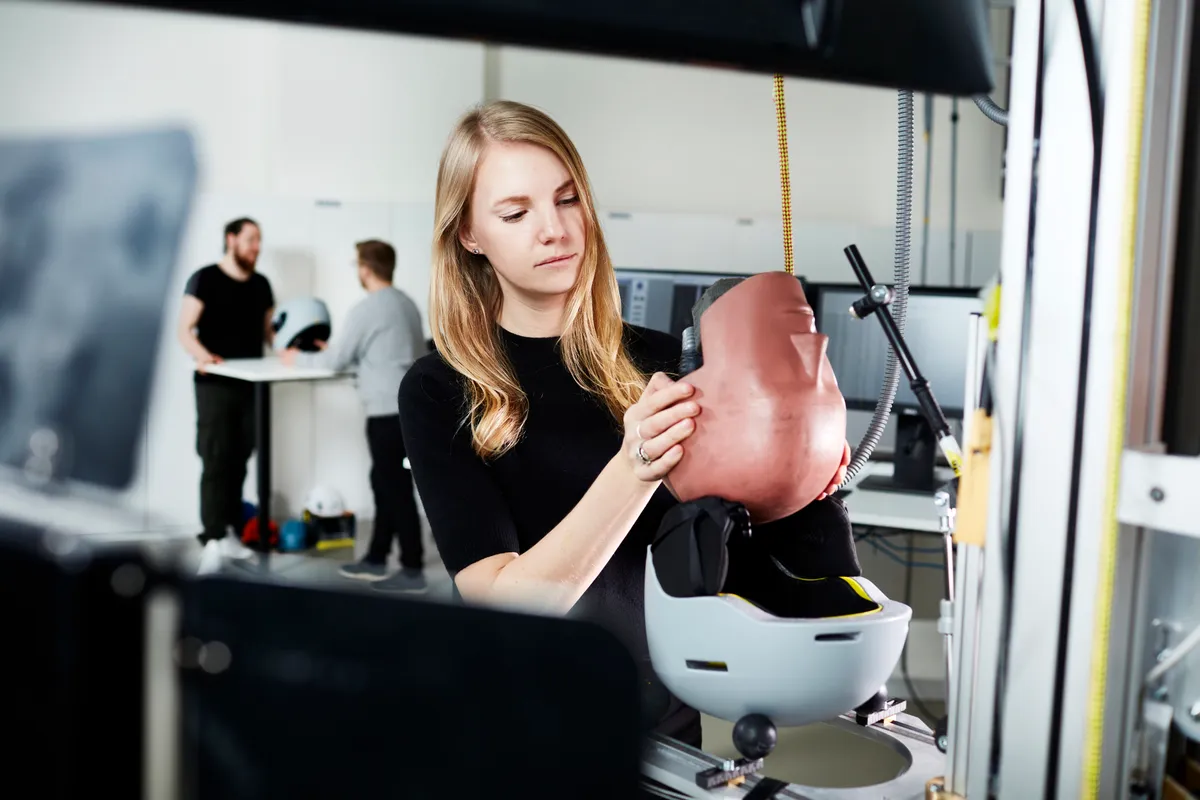
A lot of MIPS’ time is dedicated to testing its technology in its own laboratory. In fact, testing has been core to MIPS’ activities right from its inception. When we spoke to MIPS it was just about to pass 48,600 completed tests.
MIPS’ own testing shows that a helmet fitted with MIPS leads to a significant strain reduction compared to the same helmet without MIPS.
MIPS measures the strain caused by an impact by using dummy heads that have the same kinematics as a human head and are fitted with six accelerometers.
The dummy heads are used in a variety of tests, including dropping the heads at a speed of 6.2 metres per second onto angled surfaces.
The tests are recorded with high-speed cameras to ensure consistency across tests, so unexpected outcomes can be analysed.
The data recorded by the accelerometers is then fed into the company’s FE (finite element) model of the head and brain, which can model what would happen in a crash.
“For each impact, we save 1,875 data points per accelerometer,” says Seyffarth. “So there’s a lot of data we put into the FE model, and we do a step-by-step millisecond simulation if this had been an actual human having that impact.”

Seyffarth says any helmet available on the market with the MIPS yellow dot has been tested by the company and passed the standards it requires for release.
“Whenever we are releasing or approving a helmet for production, we have an internal protocol where we require at least a 10 per cent reduction in strain in every impact location, every helmet and every size.
“But that’s the minimum. We see everything from 10.1 per cent to 75 per cent reduction in strain. I would say the most common is somewhere in the area of 25 to 30 per cent reduction in strain.”
You might argue that a 10 per cent reduction doesn’t seem like a lot. But if you imagine the scale of brain injury as starting with a steep section and then proceeding to level off, you can begin to see how that 10 per cent is critical and, as Seyffarth says, can be the difference between riding tomorrow or not.
MIPS is keen to stress it can only really verify the system is safer in the lab conditions.
“Every helmet is different, every accident is different and every person is different,” Seyffarth explains. “So when we test helmets, we test them in an isolated way to make sure our system works.
“We look at the actual number when we approve a helmet, but the absolute numbers might differ between different helmets and helmet brands.
“Whenever we approve helmets, we only use data from the same day. We would really like to have helmets made from the same batch, in the same exact humidity, and all that, so we get rid of as many factors as possible.”
Seyffarth says comparing helmets isn’t like comparing “apples to apples”, and this is why MIPS will never claim one helmet to be 30 per cent safer than another, for example.
External MIPS testing
But what do other people say about MIPS safety?
Virginia Tech tech has tested over 130 cycling helmets across all disciplines since 2019 and MIPS-equipped helmets have consistently dominated the top rankings, with the top ten helmets in the road, mountain bike and urban helmet categories all featuring the tech.
Folksam, a Swedish insurance group, came to similar conclusions about MIPS with its 2020 helmet test. In total, eight helmets were given Folksam’s “recommended” label, and five of these were fitted with MIPS. It said that the eight helmets performed 18 to 76 per cent better than the average helmet.
Others, however, disagree on the effectiveness of MIPS.
The Bicycle Helmet Safety Institute says its testing “has shown that MIPS does reduce rotational acceleration. But when the head is constrained – as by a neck – MIPS does not perform well. That does not happen in the field, where heads are attached to the body. We still think your helmet, with a normal scalp under it, will move anyway.”
The institute has published a response from Halldin on the same page where he says: “We do have more than 17,000 tests done in Sweden showing that all helmets with MIPS are significantly better than helmets without MIPS. We do have scientific evidence that a helmet with a low friction layer will make a difference in a test including a tangential force.”
Do I really need MIPS and is it worth it?
Extra safety is no bad idea in our eyes, and MIPS builds a convincing case for why taking measures to protect yourself against rotational impacts is wise.
While MIPS technology often tends to add extra cost to a helmet, it isn’t a huge increase in price and there are a number of helmets with MIPS for under £100.
MIPS alternatives
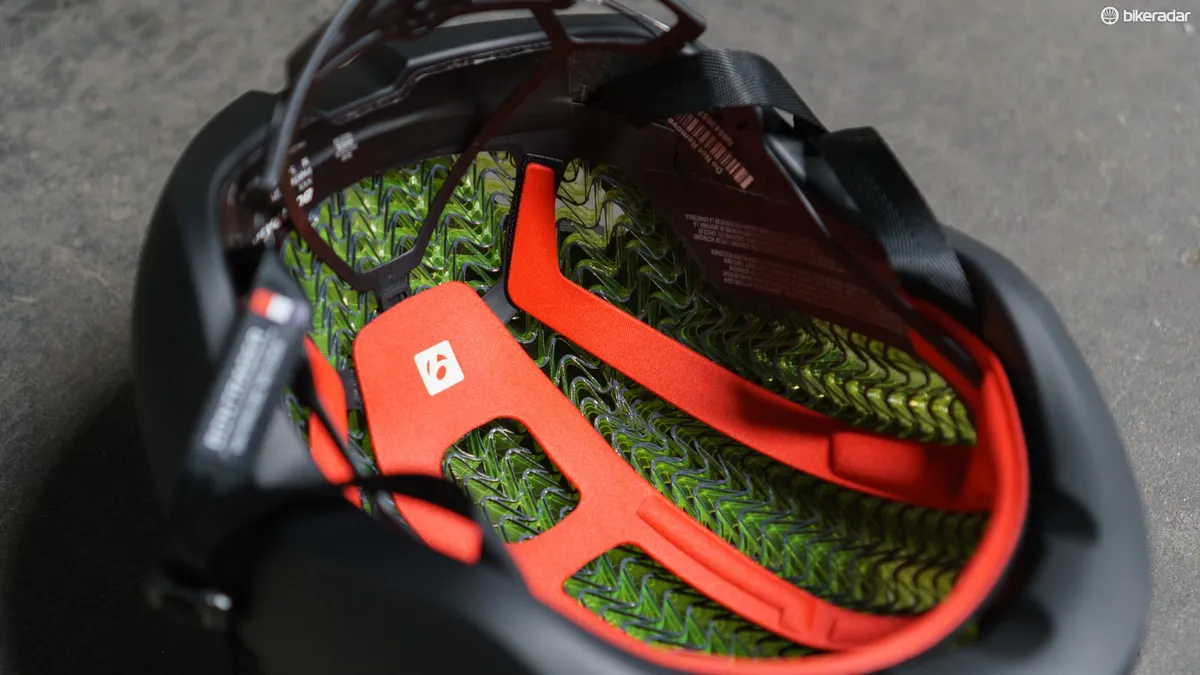
There are a number of alternatives to MIPS that also protect against rotational impacts, with brands opting for in-house solutions to rotational impacts, such as Kask’s WG11 rotational impact test and POC’s Spin technology (although POC is transitioning to MIPS across all of its helmets).
Many helmets with these alternative systems rank just as well as other MIPS helmets in testing, and sometimes better.
One alternative system is Bontrager’s WaveCel technology, which has been said to reduce rotational forces by 74 per cent and be 48 times more effective in preventing concussion compared to helmets without it.
WaveCel's inventors, Dr Steve Madey and Dr Michael Bottlang, authored a study claiming WaveCel is safer than MIPS.
“WaveCel,” says Sam Foos at Bontrager, “is a collapsible cellular material that is designed to be more effective than traditional foam helmets in protecting your head from injuries caused by certain cycling accidents. It works by going through a three-step change in material structure to help absorb the rotational force of impact before it reaches your head.”
Foos also says that WaveCel-equipped Bontrager helmets have been given "top honours" by Virginia Tech.
But Bontrager doesn’t just use WaveCel, with the brand opting for MIPS in some of its helmets too. When asked why, Foos said Bontrager “offers a range of products that align with riders' needs and combine the best balances of performance, comfort, price, and style.”
There are factors beyond safety that influence which technology is used, then.
Outdated safety standards?
One of the most common responses to the question of why a helmet does not have safety features that protect the wearer from rotational impacts is that the helmet already exceeds the required safety standards.
However, the standards for helmet testing and safety currently set out by the European Committee for Standardization (CEN) do not include rotational force parameters. This means a helmet does not have to be tested for its protection against oblique angle impacts to be approved.
Halldin is part of a working group to change the safety standards to include testing of rotational impacts across all bicycle helmets.
“We are proposing – as a complement to the current standard – an angled impact where we drop the free-falling head form at a 5-degree impact angle to the surface.”
Others, such as Lazer, have come out to say they support rotational injury standards and, beyond cycling, FIM (Fédération Internationale Motorcyclisme), the motorbike racing equivalent of the UCI, also wants to make it part of its testing.
Halldin says the ball is already rolling and we will likely see updated standards in a few years.
In theory, this could mean that some helmets do not pass the safety standards and will need to be redesigned. But Halldin says: “you could probably pass the test without a system like MIPS, as it will be a lower standard. But I think it’s important that the safety standard includes rotation anyway.”
Best helmets with MIPS
Best road bike helmets with MIPS
- Bell Avenue MIPS: £65 / AU$120
- Specialized S-Works Evade with Angi: £230
- Bontrager Circuit MIPS: £100 / $160 / AU$200 / €150
- Giro Helios Spherical: £230 / $250 / €250
- Scott Centric Plus: £150 / $200 / AU$300 / €200
Best mountain bike helmets with MIPS
- Lazer Chiru MIPS: £60 / $65
- Smith Mainline: £275 / $300 / €300
- Smith Session MIPS: £140 / £160 / €160
- Troy Lee Designs A3: £200 / $220
- Troy Lee Designs D4: £500
Best MIPS road bike helmets
Many of the best road bike helmets use MIPS technology, and this is our pick of five of the best, as rated and reviewed by the BikeRadar team.
Bell Avenue MIPS

- £65 / AU$120 as tested
- Low price and user friendly
- Not that light
At £65 / AU$120, the Bell Avenue MIPS is one of the most affordable helmets with MIPS safety technology.
This lid is user-friendly, too, with easy adjustment on the dial retention system and the glides on the straps make getting the fit around the ears simple.
It’s not the lightest, but the weight penalty is justifiable considering the safety you get for the price.
Specialized S-Works Evade with Angi
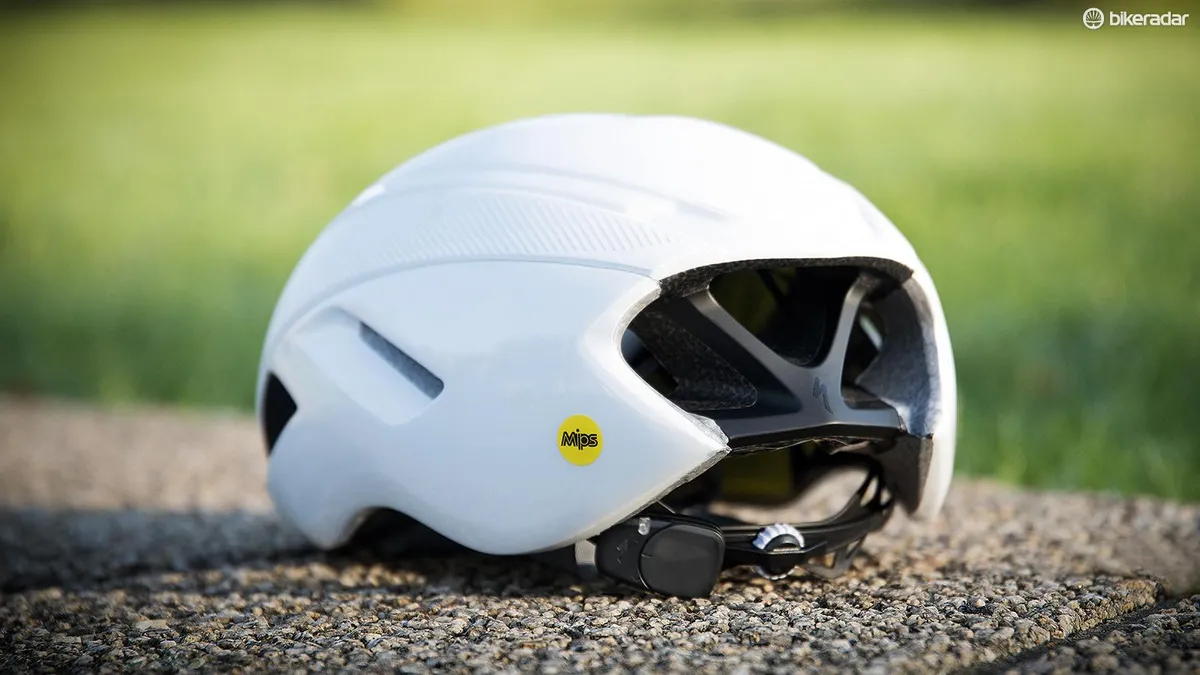
- £230 as tested
- Safety features match fit and performance
- Built-in crash detection system
The Specialized S-Works Evade uses a combination of MIPS and Angi tech for high safety levels.
Angi is a helmet-mounted device that pairs with a smartphone and will set off an alarm on your phone if it detects the forces associated with a crash.
If you’re okay you can simply turn the alarm off. If you are not, the phone will send a text to a previously selected emergency contact.
Away from safety features, though, the fit and performance of the Evade is a top-notch aero helmet.
Bontrager Circuit MIPS
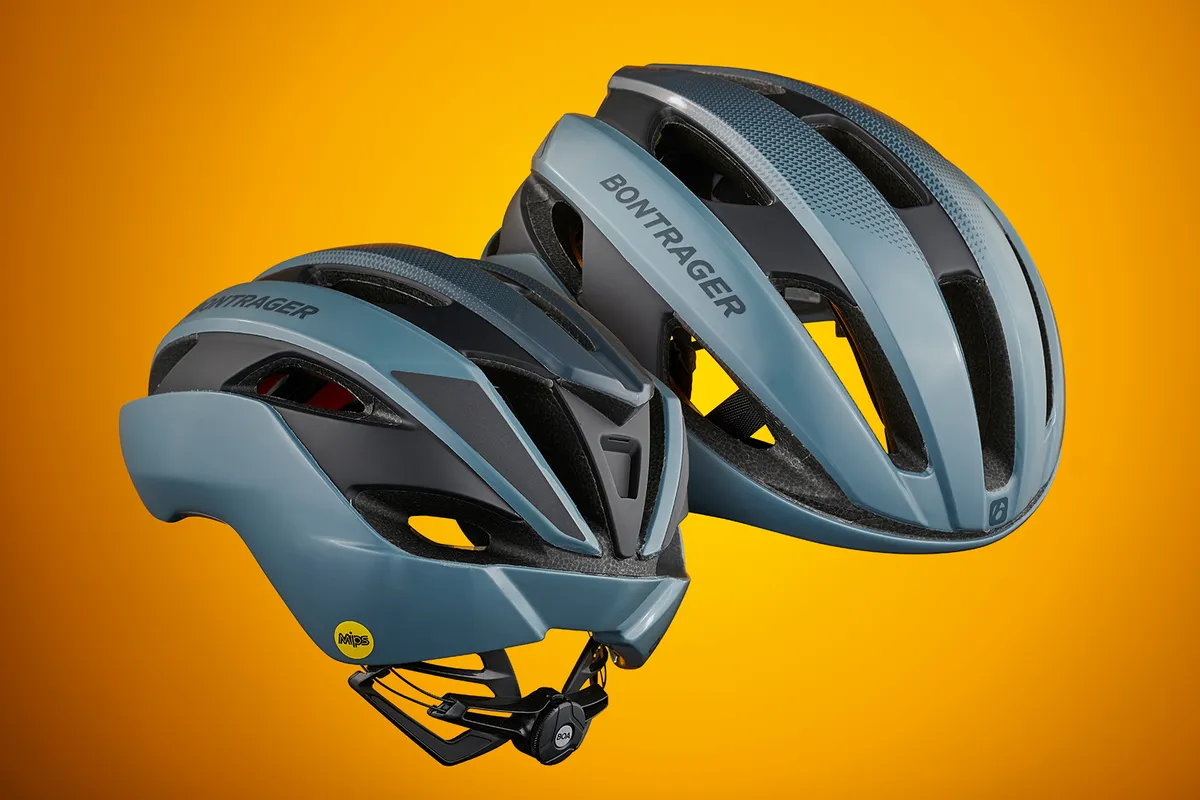
- £100 / $160 / AU$200 / €150 as tested
- Boa retention system and good ventilation
- The shape might not be popular with everyone
The Bontrager Circuit MIPS helmet is designed for a variety of riding, whether that’s road, gravel or commuting.
It has a race-like profile, with the MIPS system adding minimal bulk, and large vents providing lots of ventilation.
There are some well-thought-out touches to the Circuit including a Boa dial for easy adjustment and soft webbing on the straps.
Giro Helios Spherical
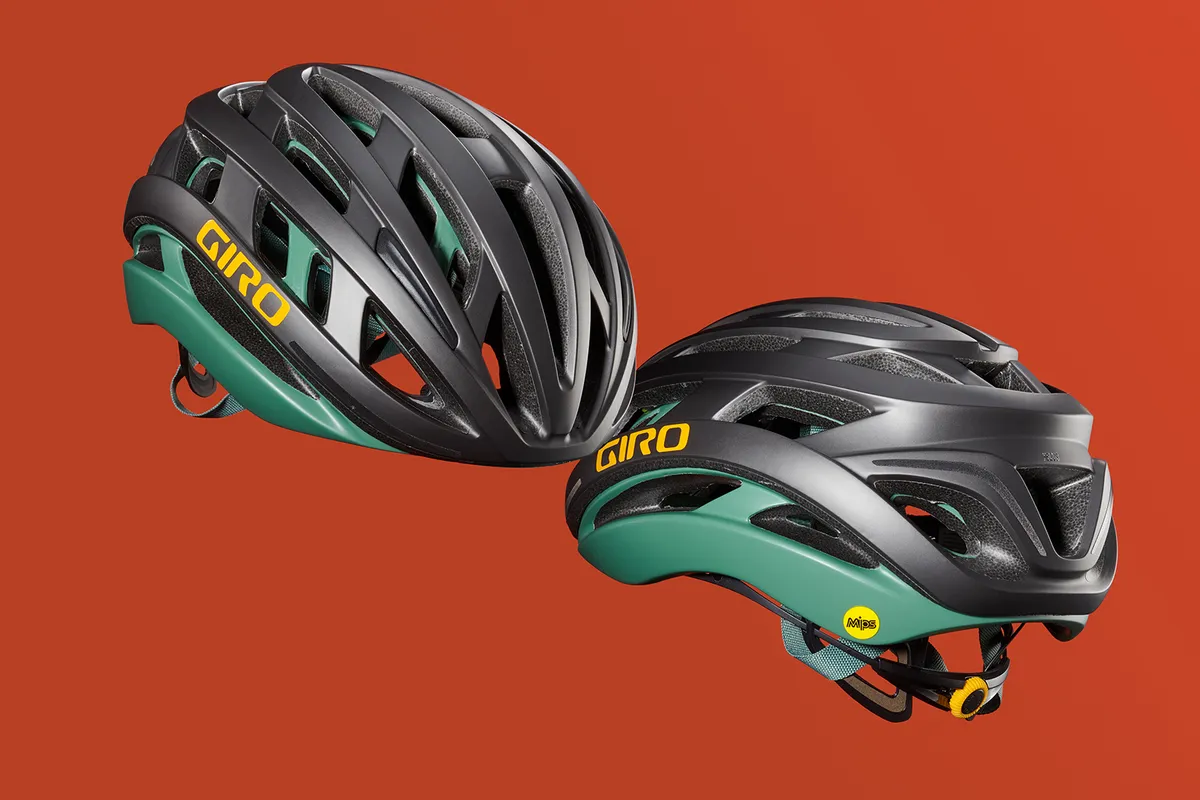
- £230 / $250 / €250 as tested
- Fit, look and performance are all good
- It’s expensive
The Giro Helios is said to be a premium design that isn’t meant for pros and has an emphasis on gravel riding. This translates into a design with less focus on aerodynamics and cooling, and more muted colours.
The helmet looks good and is supremely comfortable with minimal padding offering ample cushioning and channelling inside to keep air flowing across your head.
A hardshell keeps all the EPS foam covered, protecting it from any accidental knocks.
Scott Centric Plus
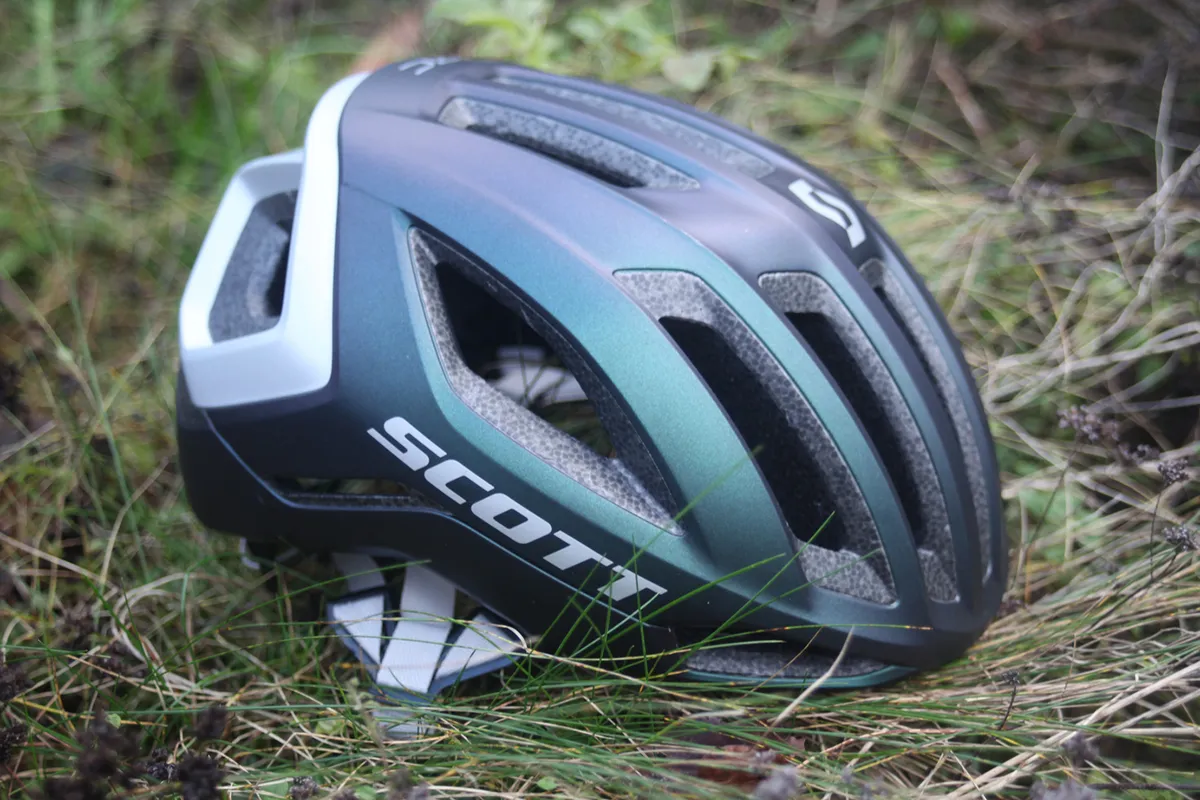
- £150 / $200 / AU$300 / €200 as tested
- Excellent cooling and fit
- Will need a hat when it’s cold
The Scott Centric Plus provides an excellent fit, in part thanks to the retention system with over 4cm of vertical adjustment.
Inside, padding is minimal but well placed and integrated with the MIPS system. This also helps improve ventilation and airflow isn’t restricted at all. This does mean you’ll need a hat or cap to keep your head warm in cooler weather.
Overall, the finish is excellent with soft straps and Y-shaped sliders. The Centric Plus is also light at 272.3g for a size large.
Best MIPS mountain bike helmets
When it comes to off-road lids, brands use MIPS across their open-face mountain bike helmets and full-face helmets.
Lazer Chiru MIPS
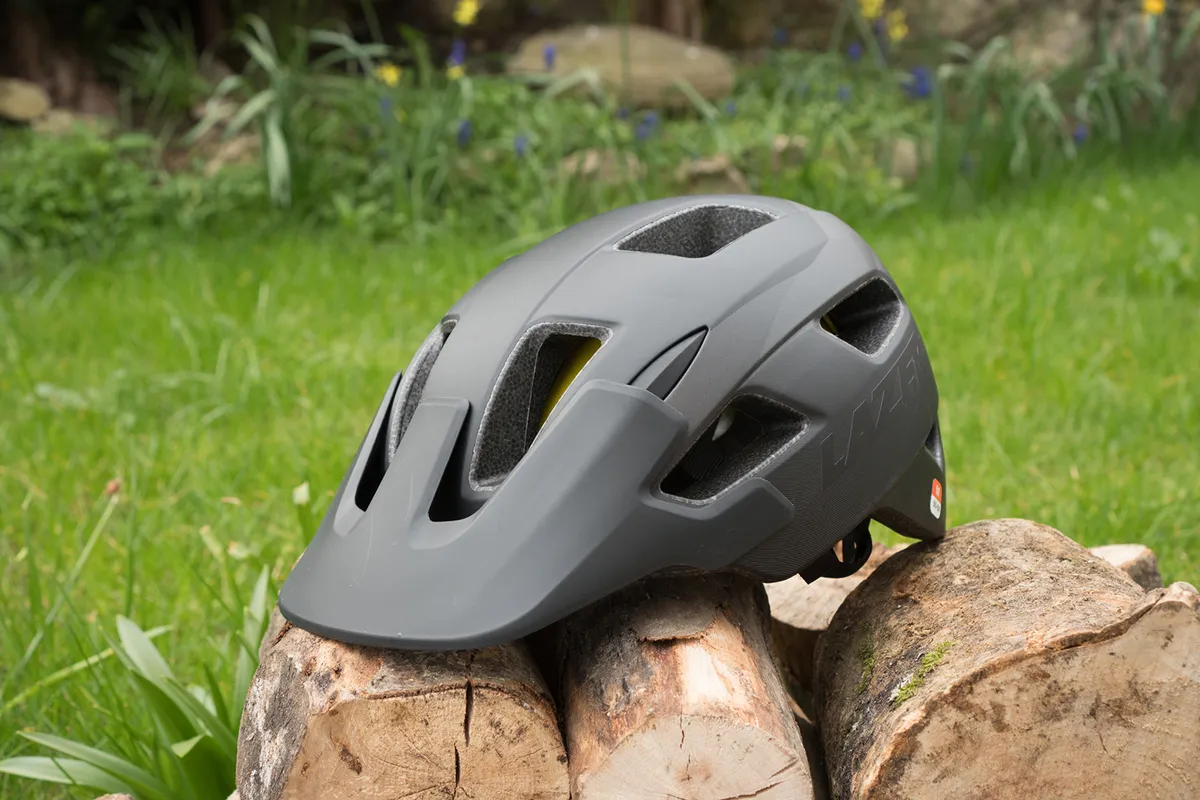
- £60 / $60 as tested
- Comfortable, neutral fit
- Can get hot on long climbs
The Lazer Chiru MIPS helmet costs only £60 / $60, which is impressive for a MIPS-equipped helmet.
We found the helmet to be exceptionally comfortable to wear, with no hot spots, and a retention system that allows for incremental adjustments to the fit.
The Chiru is quite hot to wear and the pads don’t absorb a lot of sweat, but these are minor niggles for what is an otherwise comfortable, safe and well-priced helmet.
Smith Mainline

- £275 / $300 / €300 as tested
- Solid design and vents well
- Not as lightweight as some
The Smith Mainline fits a growing category of full-face helmets that are lightweight but still suitable for multiple disciplines, making the high price tag feel a bit more justifiable.
Smith supplies the helmet with pads in different thicknesses, and once we played around with these we were able to get a good fit.
The helmet also offers good ventilation and it never felt claustrophobic in testing.
The Mainline might not be as light as the Troy Lee Designs Stage helmet, but its robust design and safety features give some good peace of mind out on the trail.
Smith Session MIPS
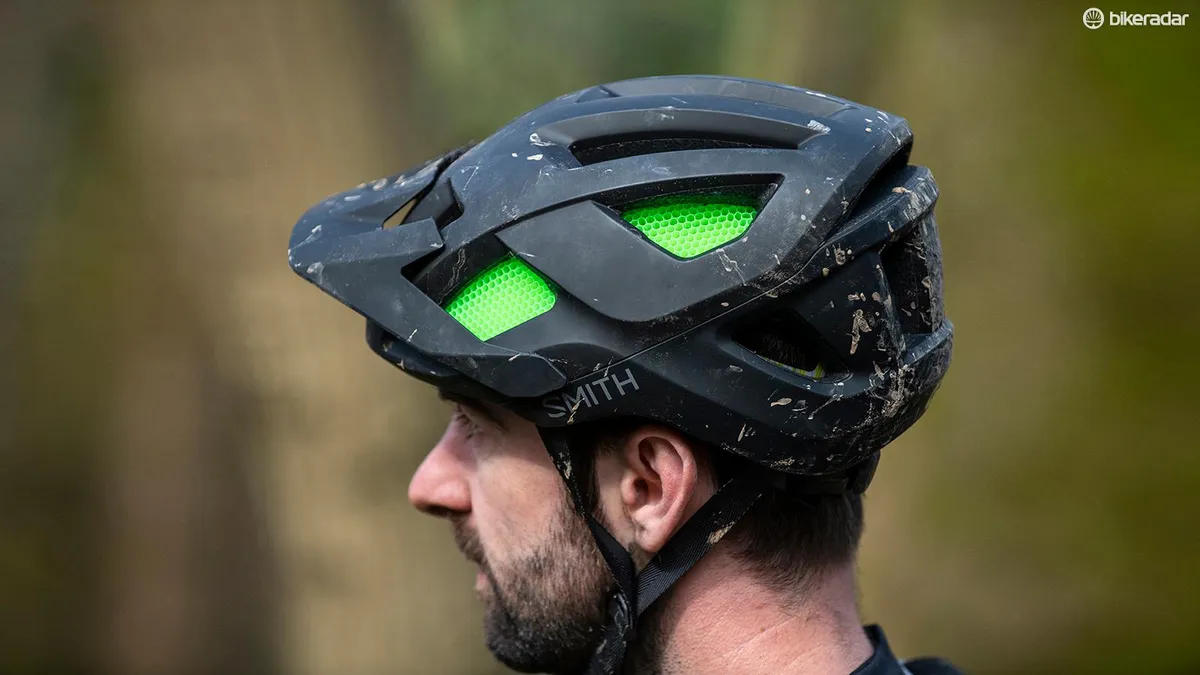
- £140 / £160 / €160 as tested
- Great cooling and compatible with goggles
- Fairly pricey
Designed for all-mountain riders, the Smith Session helmet combines MIPS with another third-party safety technology, Koroyd, which is designed to crumple in a controlled way.
The helmet has a deep fit, extending low on the head, and is comfortable to wear. Vents, paired with internal channels, help achieve excellent cooling.
Over rough terrain, the helmet stayed nicely in place, even with goggles stowed on top.
The Session is fairly pricey but it’s packed full of features and would be a good choice if you’re looking for a lid that will help keep your head cool.
Troy Lee Designs A3

- £200 / $220 as tested
- Great fit and superb comfort
- Doesn’t work with all glasses
The Troy Lee Designs A3 helmet builds on the success of the brand’s previous open-faced trail helmet, the A2.
The A3 retains the A2’s distinctive looks and has a deep coverage design for extra protection.
The helmet uses the MIPS B32 system, which means the retention cradle is integrated into the protection system.
The helmet has a snug fit and the liner gives a good amount of cushioning and dries fast, too. The Sweatglide system prevents sweat from dripping down your forehead and into your eyes.
It’s not the lightest, but with tip-top comfort, loads of protection and some nice features, there is a lot to like about the A3.
Troy Lee Designs D4
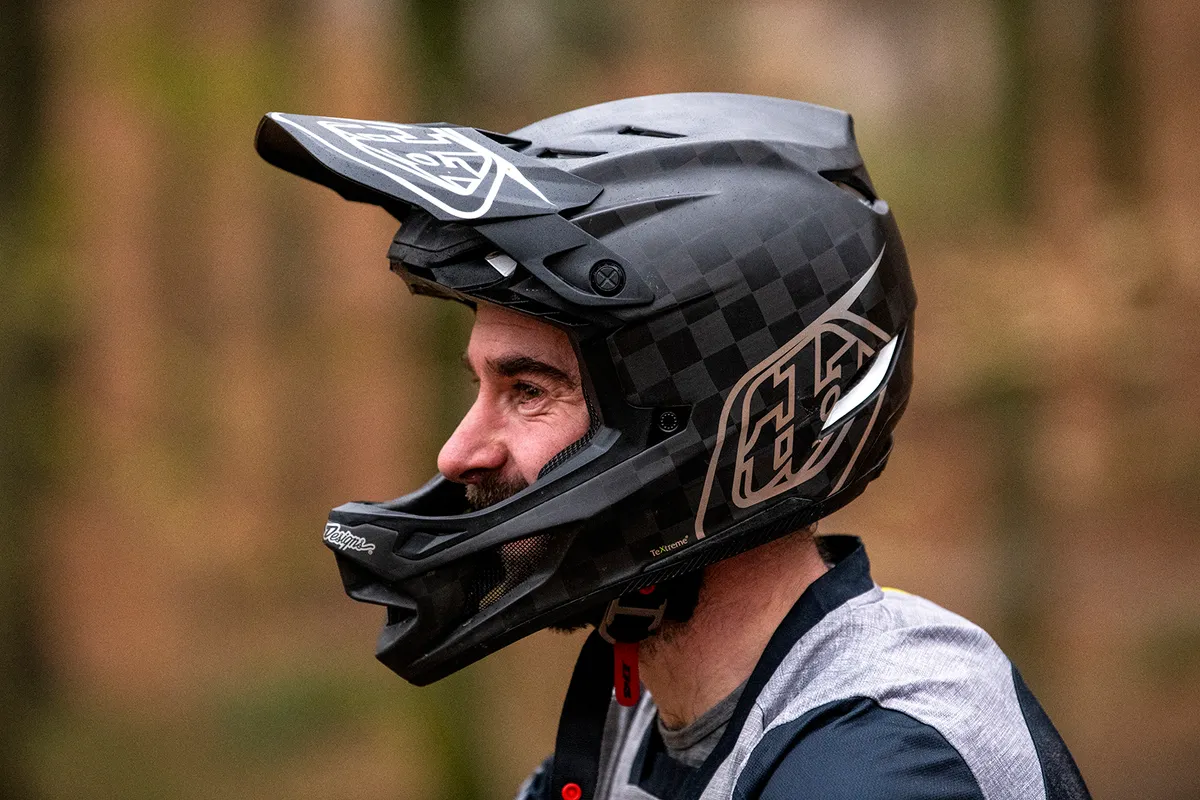
- £500 as tested
- Decent venting, great comfort and looks
- Not cheap
The D4 may have taken design cues from the original 1996 Troy Lee Designs Daytona helmet – and it looks great – but thankfully safety, comfort and ventilation are all up to date.
The helmet combines a host of materials and features for safety, such as EPS foam collarbone protection, TeXtreme carbon fibre and, of course, MIPS.
Packing the helmet full of safety features hasn’t prevented Troy Lee Designs from keeping this downhill helmet light, with a claimed weight of 960g for a size medium.
This is one of the best full-face helmets on the market, with top safety features, materials and lust-worthy looks.
The high price tag might not be a surprise considering all of this. If you can’t stretch to £500, TLD does make a composite version of the D4 that costs £375.
